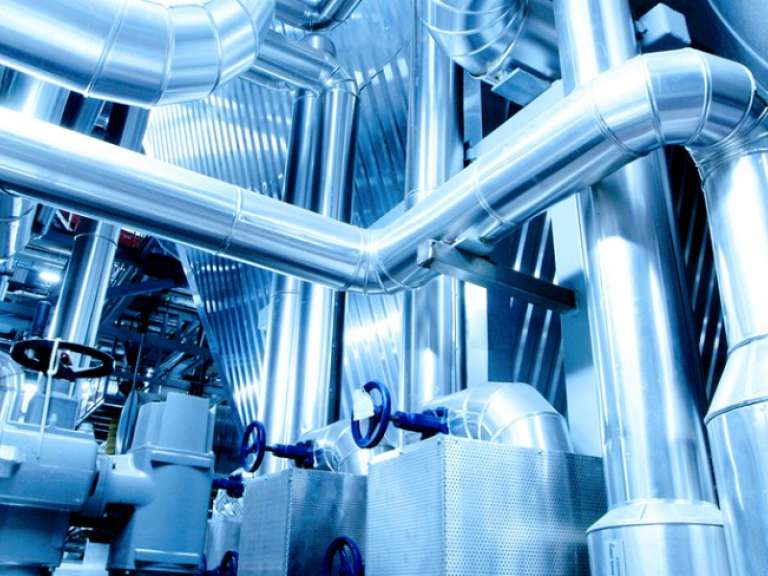3 Power Plant Safety Innovations Asset Managers Should Consider
Heidi VellaEradicating hazards completely is impossible, but new power plant safety innovations can mitigate risk.

The power generation sector is safer now than at any other time in history—but there is always room for improvement. After all, complacency is a hazard, itself. Recent power plant safety innovations can help asset managers improve health and safety for the entire workforce.
Incidents like the 2014 Didcot B Power Station cooling tower fire in Oxfordshire, England are reminders that things still can and do go wrong. The fire at the gas-powered station spread from one to three cooling towers quickly, but fortunately no staff members were injured. Other possible risks at power plants include, but are not limited to: working at great heights and in confined spaces, fire hazards, electrical shocks, and hazardous chemicals.
Compliance with increasingly stringent health, safety, and environmental regulations is mandatory to mitigate these risks. It's challenging, however, for asset managers to keep up with these regulations while also upgrading infrastructure, managing a retiring workforce and resultant skills shortage, and minimizing downtime. Here are three types of technologies that can help:
Power plant safety innovations include the adoption of wearable technology. Wearables enable remote communication, so the most knowledgeable worker can always be on the job even if he or she can't physically be there.
For example, by using tablets, cameras, and other wearable technology, the most senior staff member can assist 3–4 less-experienced employees. The remote staff member can predict potential issues, work with the field operator to minimize delays and errors, and respond to questions. This scenario also acts as a training exercise for less-experienced staff. All of the technology is hands-free, so workers can do their jobs without interruption.
Today, asset managers can even deploy robots—such as a tablet on wheels that can be remotely operated. The team can send in a robot to the sensitive area of the plant that is flagged with an issue and see through the machine's eyes in order to assess the situation. This results in a safer, more efficient, and better-prepared response.
Employee complacency is perhaps the most dangerous hazard of all. Therefore, it is important for plant operators to have a robust and regular training program to encourage proper implementation of operation and maintenance procedures. 3D virtual reality (VR) technology provides an immersive environment for training and simulations.
Inside a virtual environment, employees can be trained on health and safety procedures in the context of their specific workspaces. VR can simulate plant assets, cranes, enclosed spaces, places with hazardous chemicals, or any other part of the plant. In this way, VR can bring staff training to life.
Humans or manikins can also be utilized in conjunction with VR or augmented reality (AR) for virtual ergonomics or scenarios such as first aid or rescue. Digital manikins for training can even be built using anthropometric specifications. They possess fully articulated hand, spine, shoulder, and neck models to accurately reproduce natural movements such as reaching, grasping, walking, and lifting.
Beyond employee training, virtual reality also enables plant operators to better plan, schedule, and visualize operational procedures, which can increase safety and efficiency.
While every power plant has unique safety challenges, a commitment to safety is of even greater importance at nuclear plants. Though they are already extremely safe, predicting and managing potential hazards at nuclear power stations is an ongoing task.
Researchers at the University of Ontario Institute of Technology have been working with several power providers to develop a fault detection system for nuclear power plants that they call a Fault Semantic Network.
The system uses real-time utility data to simulate problems, or faults, at nuclear power plants. This process enables nuclear plant operators to fully understand potential fault possibilities and how to best prevent them. This model-based approach can be implemented in parallel with a real plant.
Researchers at the university say the technology can enhance system performance by improving plant safety. Operators can model faults in critical equipment and identify the protection barriers and probabilities of different faults occurring. The system provides operators with a better understanding of actual fault propagation scenarios. It then links those scenarios to safety protection layers to help overcome future fault propagation scenarios.
While it impossible to completely eliminate all hazards, new power plant safety innovations, along with detailed assessments and adequate staff training, can mitigate risk and provide a safer work environment.
Demand-side response technology can help utilities better manage load dispatch at times of peak demand, gain greater insight into customer behavior, and capture new revenue streams.
Smart appliances, electric vehicles, and the smart grid will all play a vital role in consumer energy demand management.
Today's generating plants are undergoing a significant business transformation involving digital tools to manage risk and optimize fleet performance.